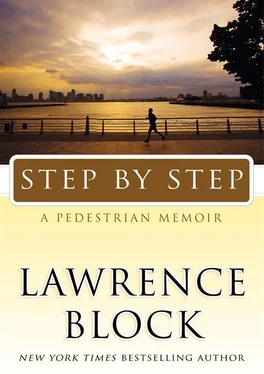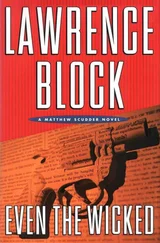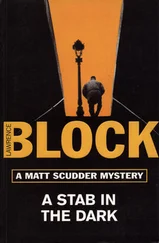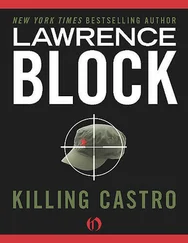Lawrence Block - Step by Step
Здесь есть возможность читать онлайн «Lawrence Block - Step by Step» весь текст электронной книги совершенно бесплатно (целиком полную версию без сокращений). В некоторых случаях можно слушать аудио, скачать через торрент в формате fb2 и присутствует краткое содержание. Год выпуска: 2009, ISBN: 2009, Издательство: William Morrow, Жанр: Биографии и Мемуары, Юмористические книги, на английском языке. Описание произведения, (предисловие) а так же отзывы посетителей доступны на портале библиотеки ЛибКат.
- Название:Step by Step
- Автор:
- Издательство:William Morrow
- Жанр:
- Год:2009
- ISBN:978-0-06-172181-6
- Рейтинг книги:3 / 5. Голосов: 1
-
Избранное:Добавить в избранное
- Отзывы:
-
Ваша оценка:
- 60
- 1
- 2
- 3
- 4
- 5
Step by Step: краткое содержание, описание и аннотация
Предлагаем к чтению аннотацию, описание, краткое содержание или предисловие (зависит от того, что написал сам автор книги «Step by Step»). Если вы не нашли необходимую информацию о книге — напишите в комментариях, мы постараемся отыскать её.
bestselling author comes a touching, insightful, and humorous memoir of an unlikely racewalker and world traveler.
Step by Step — читать онлайн бесплатно полную книгу (весь текст) целиком
Ниже представлен текст книги, разбитый по страницам. Система сохранения места последней прочитанной страницы, позволяет с удобством читать онлайн бесплатно книгу «Step by Step», без необходимости каждый раз заново искать на чём Вы остановились. Поставьте закладку, и сможете в любой момент перейти на страницу, на которой закончили чтение.
Интервал:
Закладка:
If lifting is easier to understand, that doesn’t make it easier to avoid. The better you are at racewalking, the faster you go; the faster you go, the more likely you are to break the rule against lifting — without knowing that’s what you’re doing. That’s why Olympic racewalkers so often find themselves getting disqualified. It’s not because they’re cheating. There are judges all over the place, and you’d have to be out of your minds to cheat on purpose. But if you go fast enough there’s a good chance that one foot will leave the ground before the other foot returns to it. That’s lifting, and the judges will DQ you for it.
But only if they spot it. It’s not that easy to spot, and they have to be able to spot it with their naked eyes in order for it to count against you. Because, see, if you film elite racewalkers, and slow the film down and examine it frame by frame, you discover the unsettling fact that everybody lifts.
So they tweaked the rule accordingly, and lifting has to be visible to the unassisted eye in order to constitute a violation of the rules. (And that eye, let us note, need not be entirely unassisted. Eyeglasses or contact lenses, to correct myopia and astigmatism and the like, are acceptable. Binoculars are not.)
Most racewalkers don’t have a problem with the rules. Those who do tend to fall in one of three categories, which for convenience we could label the Good, the Bad, and the Ugly.
First, the Good. Every once in a while an Olympic racewalking event is marked by the disqualification of a country’s whole team. Some years ago that happened to the Mexicans; they were the fastest contingent, and they all got tossed for lifting. Around the same time, a team of Italian bridge players was disqualified for cheating in an international competition, but this was different. When you cheat at bridge, you know it. The Mexicans thought what they were doing was legal. The judges thought otherwise.
In hang gliding, as I understand it, the pastime becomes more dangerous the better you get at it. As you progress in the sport, you place yourself in increasingly precarious situations that a lesser participant would be unable to achieve. Then, if something goes wrong and an updraft suddenly vanishes, say, all you can do is fall to earth.
That’s a harsher penalty than a disqualification, to be sure.
Next, the Bad. Walkers who are new to racewalking, and who embraced the sport without adequate instruction, may be disqualified because they haven’t learned to walk in a way that the sport finds acceptable. More often than not, they’re bending their knees when they shouldn’t be. If such a walker draws a warning or a disqualification, it may encourage him to learn more and correct his technique.
Finally, the Ugly. Not everyone is physically capable of racewalking in proper form. One friend of mine, an enthusiastic participant in twenty-four-hour and multiday races, has a knee he can’t straighten completely. Another fellow I met in Texas is one of a handful of certified Centurions; he’s walked over a hundred miles within twenty-four hours in a judged race. He doesn’t racewalk anymore, he said, because he can’t maintain a straight knee for great distance. He walks, and nothing about his gait would lead you to call it running, but it’s not racewalking.
In the world of ultradistance walking, there’s general agreement that racewalking rules shouldn’t apply. In Europe and Australia, many ultrawalkers have never learned specific racewalking technique in the first place, and merely walk as rapidly as they can in a manner that comes naturally to them. In the U.S., most of us employ racewalking technique insofar as we can. Judges in Centurion events don’t worry about a soft knee, and the pace in these races is such that lifting is not an issue.
At one such event, my friend Ollie Nanyes was exhausted and in agony in the late hours of the race. “I wish you’d go ahead and disqualify me,” he told a judge. “I can’t,” the judge replied. “I could only DQ you for running, and right now you couldn’t run if you had a bear chasing you.”
11
with the twenty-mile Mike Hannon completed, the finish line of the London Marathon seemed like an eminently attainable goal. And so I went out every day and trained, and every weekend I entered a race. Ten kilometers and five miles in Central Park, five miles in the Bronx, a half-marathon in Brooklyn. My time in the Bronx race was 51:40, in Brooklyn 2:22:25.
But by the end of the Brooklyn race, my feet were a mess. All these years later, a glance at my race schedule is enough to confirm that I was overdoing it, but all I knew at the time was that my feet were in bad shape. Blisters, soreness, pain. My knee was fine, racewalking really did avoid stressing the knees, but my feet were taking a beating. I waited for them to get better, and they didn’t, and by the time I got on the plane for London I was concerned that I wouldn’t be able to finish the race — and would probably be well advised not to start it.
I landed at Heathrow and found a bed-and-breakfast in Paddington. I went to race headquarters and picked up my number and souvenir T-shirt, which showed a feisty bulldog wearing the Union Jack. I took it back to my room and wondered if I’d ever get the chance to try it on.
Because I’d long since decided that one had to earn the right to wear a race shirt, and I never put one on until the race was over. This had never been a problem, as I’d so far finished every race I signed up for, but how could I expect to finish this one? And why would I even bother to start it?
I had a few days in London to think about it, and I spent them seeing the city. My museum visits included the Wallace Collection, a small museum devoted largely to the work of nineteenth-century French artists who painted idealized bucolic scenes. This was supposed to divert me from anxiety about the impending race, but I realized it wasn’t working when I found myself noticing that every last one of those barefoot shepherds and shepherdesses had second toes substantially longer than their big toes.
Which is to say that they all suffered from Morton’s Foot, a structural peculiarity well known to runners and their podiatrists.
My feet didn’t get any better in the days leading up to the marathon. It rained the night before the race and was still at it come race time.
The race started somewhere south of London — the halfway point would come at Tower Bridge — and I found my way there knowing it would be impossible for me to cover twenty-six miles, or anywhere close to it. I couldn’t even work up a good fantasy in which I managed to finish the race.
What got me to the start was a little bargain I made with myself. I figured I could manage three miles, and I decided that would entitle me to wear the goddamn shirt. My feet were wet already, and it hurt to walk, and I couldn’t see how walking would get a whole lot better in wet socks.
(Cotton socks, of course. There was widespread agreement at the time that natural fibers were universally preferable to artificial ones, and that real men didn’t wear polyester. There are a lot of good things about cotton, but most of them disappear in a hurry when you work up a sweat. Nowadays all athletic socks are either man-made fibers or wool, and runners favor “technical” shirts designed to wick perspiration away from the body. Cotton socks, a cotton shirt, ill-fitting shoes — oh, I was in great shape.)
Still, three miles. How hard could it be to walk three miles?
I walked the whole thing.
I don’t really know what kept me going. Some kind of stubborn determination, I suppose, but if so it was operating entirely on an unconscious level, because when the race started I had no intention of staying with it for more than three miles or so. I didn’t aspire to anything beyond that.
Читать дальшеИнтервал:
Закладка:
Похожие книги на «Step by Step»
Представляем Вашему вниманию похожие книги на «Step by Step» списком для выбора. Мы отобрали схожую по названию и смыслу литературу в надежде предоставить читателям больше вариантов отыскать новые, интересные, ещё непрочитанные произведения.
Обсуждение, отзывы о книге «Step by Step» и просто собственные мнения читателей. Оставьте ваши комментарии, напишите, что Вы думаете о произведении, его смысле или главных героях. Укажите что конкретно понравилось, а что нет, и почему Вы так считаете.












